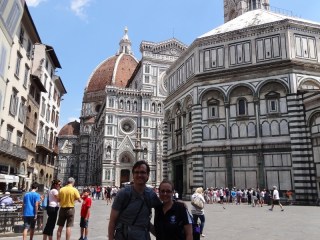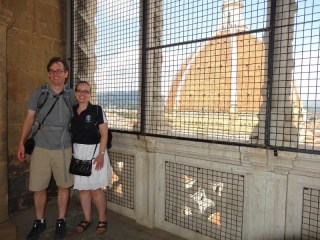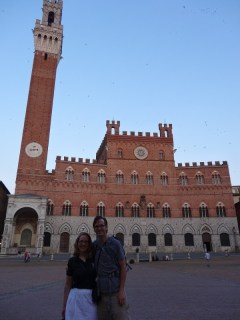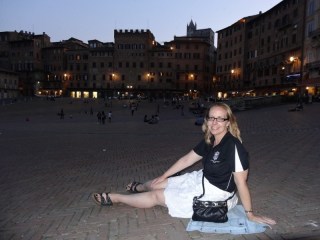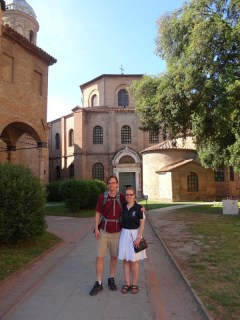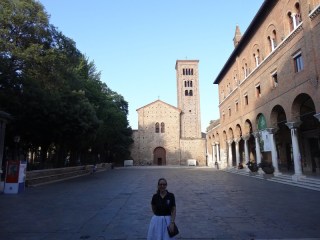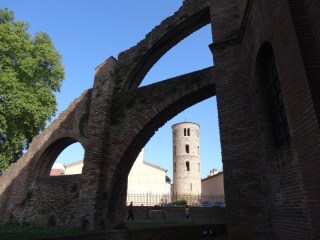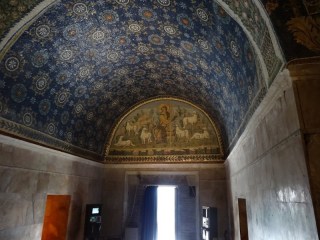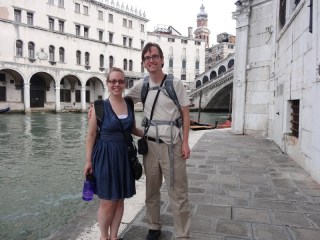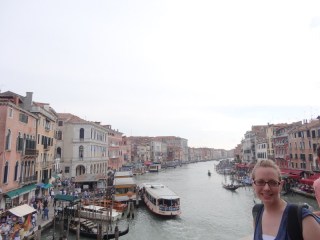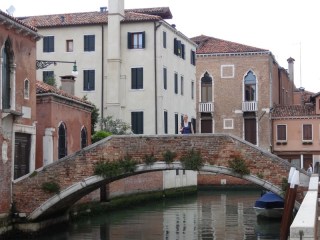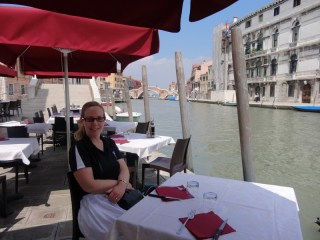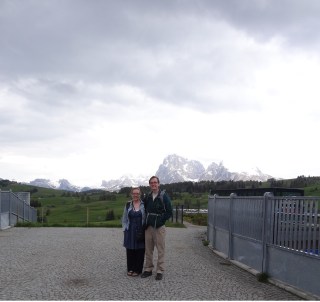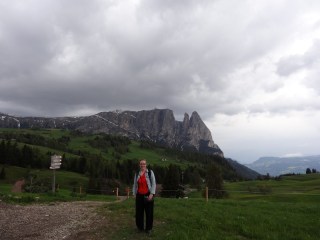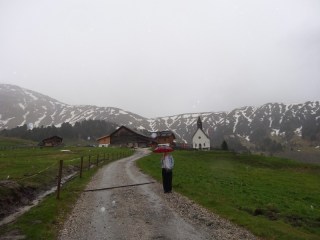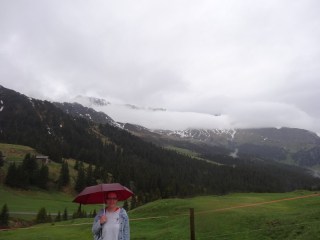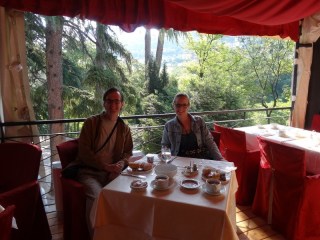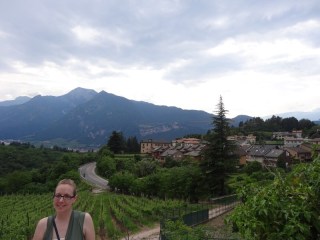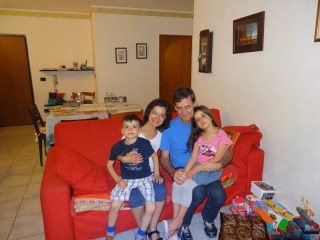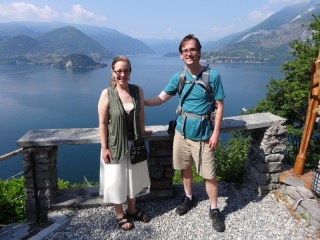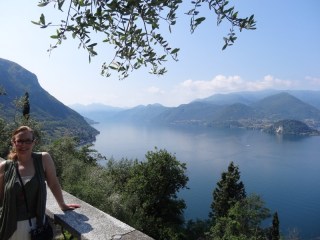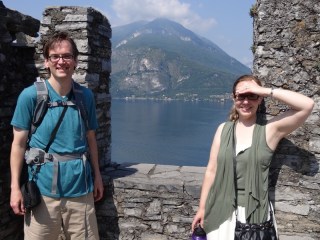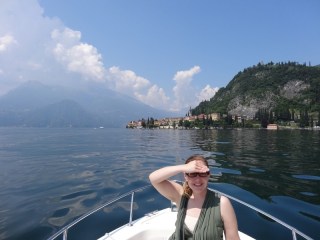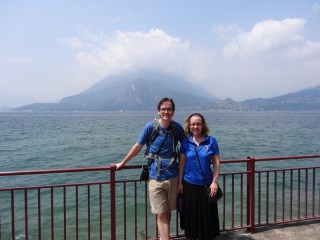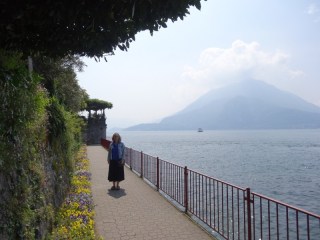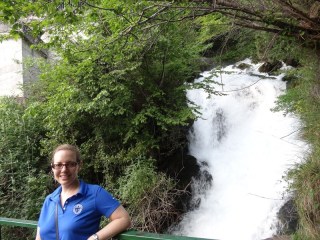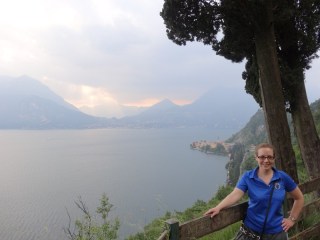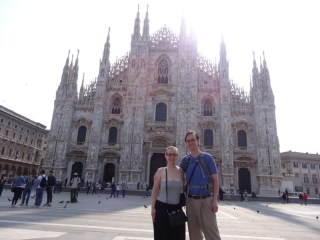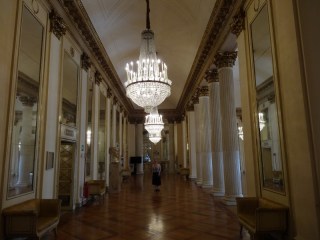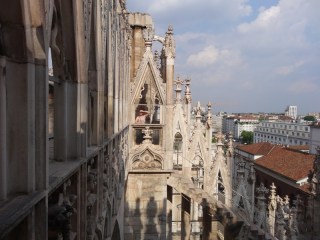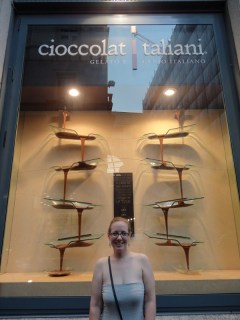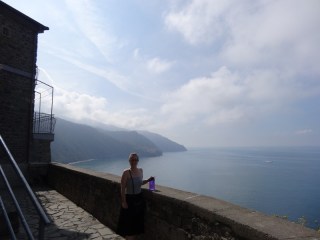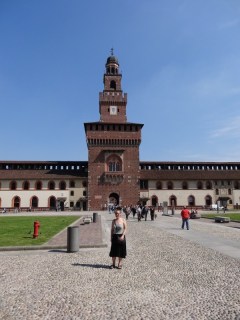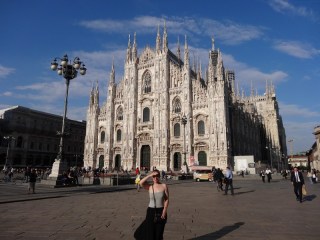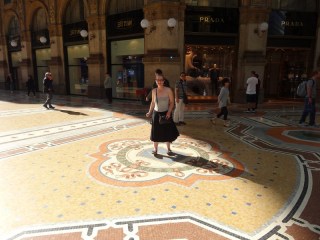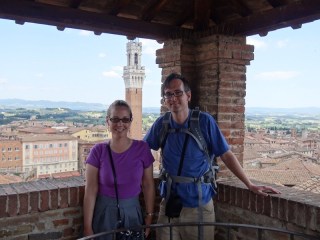 Siena is a neighborhood town. There are seventeen neighborhoods that all have symbols (like the caterpillar, owl, panther, and so on), and the loyalty to each neighborhood seems pretty fierce. Ten of the seventeen neighborhoods race in a horse race in the main square in July and in August, and it is a REALLY big deal. We are still almost three weeks away from the first race, and we heard loud singing last night as we were going to bed. At eleven o’clock. On a Wednesday. There was one pope who came from the town of Siena, and I lost count of how many statues and paintings there were of him in the cathedral. This is one town that takes civic pride seriously.
Siena is a neighborhood town. There are seventeen neighborhoods that all have symbols (like the caterpillar, owl, panther, and so on), and the loyalty to each neighborhood seems pretty fierce. Ten of the seventeen neighborhoods race in a horse race in the main square in July and in August, and it is a REALLY big deal. We are still almost three weeks away from the first race, and we heard loud singing last night as we were going to bed. At eleven o’clock. On a Wednesday. There was one pope who came from the town of Siena, and I lost count of how many statues and paintings there were of him in the cathedral. This is one town that takes civic pride seriously.
It also is one easy town in which to get lost. The roads are narrow and the buildings are several stories tall, so you cannot see landmarks. Since the town was built on a hill, the streets are not laid out in any logical order, and many times we thought we were heading in the right directon, only to discover we were heading off the wrong way, and sometimes the opposite way. We used our map quite a lot, and even with that, we got turned around fairly often. We had to keep telling ourselves that the journey is a destination in itself, and this is all part of the experience.
We slept in, and so did not get out touring until about 11:00. We headed over to the cathedral, called the Duomo (“Dome”). We bought a ticket that let us into five different sights, but we started with the Duomo. If the Duomo in Florence is designed around clean lines and simplicity, the Duomo in Siena took the complete opposite approach. The outside of the church is ornate, with white and green marble and lots of decorations – it reminded me of Milan’s cathedral for elaborateness.
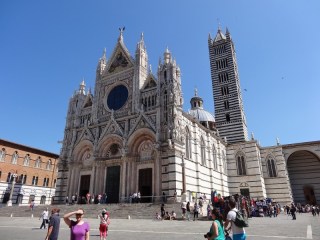 The cathedral’s interior takes this to a whole new level – it is a complete riot of art and sculpture. The floor alone took over two hundred years to decorate, and it seems as if every square inch of floor and wall and ceiling are used to show off art. It is a bit overwhelming. There are works by Michelangelo and Donatello in the church, and I suspect art lovers could spend whole days in the church and the museum.
The cathedral’s interior takes this to a whole new level – it is a complete riot of art and sculpture. The floor alone took over two hundred years to decorate, and it seems as if every square inch of floor and wall and ceiling are used to show off art. It is a bit overwhelming. There are works by Michelangelo and Donatello in the church, and I suspect art lovers could spend whole days in the church and the museum.
My favorite room was the library. Not only did it have a highly decorated ceiling that was still bright and colorful after five hundred years, but it housed a large collection of huge (two feet by three feet) hymnals in Latin (generally from the 1500s, but a few in the church collection went back to the eighth century). The pages were decorated with Biblical stories, and were brightly colored. They were cheerful to me.
We made a circuit of the whole church, including a couple of small chapels. One held two statues by Bernini and a heavily gilded ceiling. I liked that room very much.
After we toured the cathedral, Mer wanted to walk back to the hotel to get her jacket, since she’d been cold in the church. I took that as a good sign to get lunch, so we stopped at a sandwich place after retrieving her jacket.
We recommenced our tour with the baptistery under the cathedral. Since the cathedral was built on top of a hill, the baptistery filled in under one end, and it too is highly decorated with art and sculpture. We asked the ticket taker, and she indicated that the baptistery is still used for baptisms, which is great.
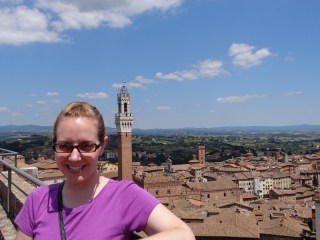 We moved up the hill a bit to look in at the crypt. The “new” cathedral was built around 1300 over another church, and the frescoes from the first church remain in the crypt, although some are damaged or obscured by the foundations of the cathedral. They were all scenes from the life of Jesus, and they were interesting to see. As a huge bonus, the crypt had on loan Caravaggio’s painting of John the Baptist. Caravaggio is an artist I actually know about and like, and he is known for his realism and his dramatic use of light in his paintings. So I was pretty pleased to get to see my second Caravaggio on this trip (in the museum in Milan, we also saw a still life of decaying fruit he did).
We moved up the hill a bit to look in at the crypt. The “new” cathedral was built around 1300 over another church, and the frescoes from the first church remain in the crypt, although some are damaged or obscured by the foundations of the cathedral. They were all scenes from the life of Jesus, and they were interesting to see. As a huge bonus, the crypt had on loan Caravaggio’s painting of John the Baptist. Caravaggio is an artist I actually know about and like, and he is known for his realism and his dramatic use of light in his paintings. So I was pretty pleased to get to see my second Caravaggio on this trip (in the museum in Milan, we also saw a still life of decaying fruit he did).
We headed into the cathedral museum, where some of the art pieces are kept – ones that were fragile or were starting to erode. The museum is small and well done, but I have to admit I was starting to get “art fatigue.” The museum does have one non-art attraction – you can climb up to the top of a huge wall that was meant to be part of a bigger cathedral. The wall was built, but the cathedral was never built because of the plague hitting Siena. Naturally, I was excited about the climb up, and Mer was excited about the view. There were two levels – one was halfway up and protected by a high wall, and the other was all the way up, and had just a railing. I could not stay on top because of my fear of heights, so I went back to the halfway landing, which felt safer. Mer stayed at the top for a few minutes, and then joined me before we headed back into the museum to finish up the couple of rooms we had missed.
We grabbed some gelato as a pick-me-up, and we headed across town to San Francesco, a Franciscan church that is quite large. This was the last sight covered by our ticket – it had a small art museum in the old Oratory, and we checked it out. Even though I was a bit weary of art, the Oratoty only had six rooms, and both the art and the building were interesting.
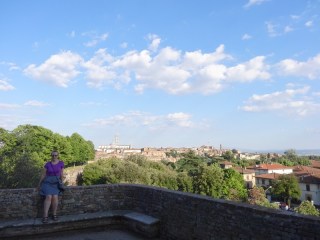 After visiting the museum, we went into the church, with which I fell in love. In contrast with the busy cathedral, San Francesco is simple and clean, with some art around, but not an overwhelming amount. The art almost all had to do with Biblical stories or the lives of saints, and it felt intimate, which was strange in such a huge church. This may have been my favorite church of the trip because it was an unexpected joy to find it. Oh – should you wonder about neighborhood spirit, all seventeen flags of the neighborhood were displayed in the church, but the local flag (the caterpillar) had four flags, all near the altar.
After visiting the museum, we went into the church, with which I fell in love. In contrast with the busy cathedral, San Francesco is simple and clean, with some art around, but not an overwhelming amount. The art almost all had to do with Biblical stories or the lives of saints, and it felt intimate, which was strange in such a huge church. This may have been my favorite church of the trip because it was an unexpected joy to find it. Oh – should you wonder about neighborhood spirit, all seventeen flags of the neighborhood were displayed in the church, but the local flag (the caterpillar) had four flags, all near the altar.
We walked around the outside of the church and headed back to the room. The heat of the day had gotten to me, so I took a half-hour nap before our final push of tourism for the day. We headed off to find the fort on the northwest side of town, and it took forever. We wandered around streets, and checked the map a bunch of times. We discovered some fantastic views, including another huge church over by the fortress. We finally came across the fortress, but could not find a way in. We wandered around the entire fort before finding a way in by following a jogger; we had seen people running along the tops of the walls, so Mer suggested we follow this guy. It worked. The fortress is now a park, and the old fortifications are filled in and full of trees (and runners). It is a very pretty place with some amazing views of the older parts of Siena and the hills around. We walked around the whole thing.
We came out of the fortress after having walked around it, and headed back into Siena. We were not really trying to navigate too hard, and we stumbled across a chocolate store with chocolate on sale. We bought some to eat later in the square, and kept wandering down the road for all of about five minutes when we started to recognize stores and the local flags. Without trying, we had stumbled on a quick and easy way back to our hotel.
We swung by the room to wash up before heading out for supper. I headed off in a particular direction, but then picked a restaurant largely on whim. It felt fairly local to us, and the food was good. We ended the evening by heading back to il Campo to sit and eat chocolate and to people-watch. It had been a busy little day, but a very good one.
